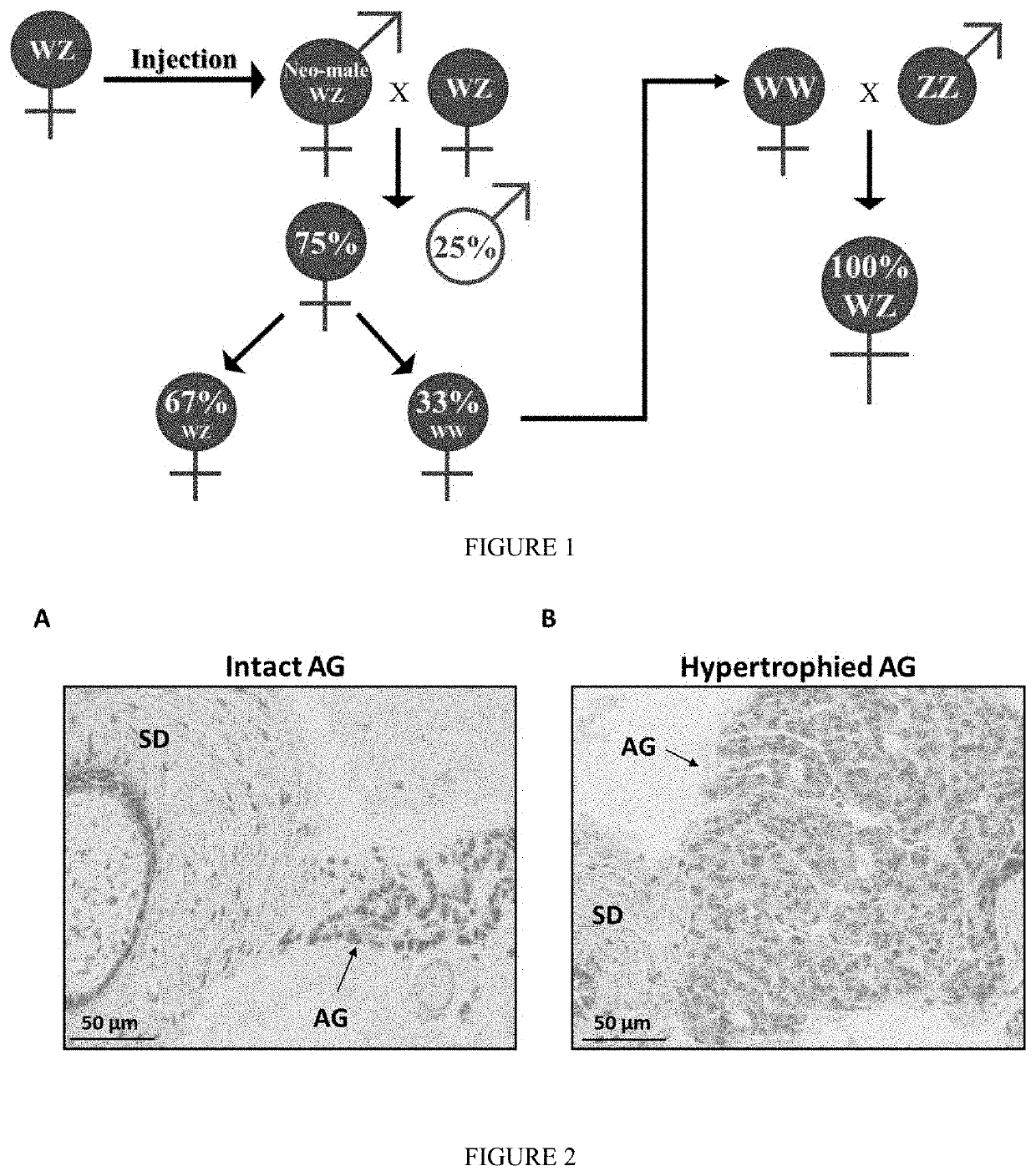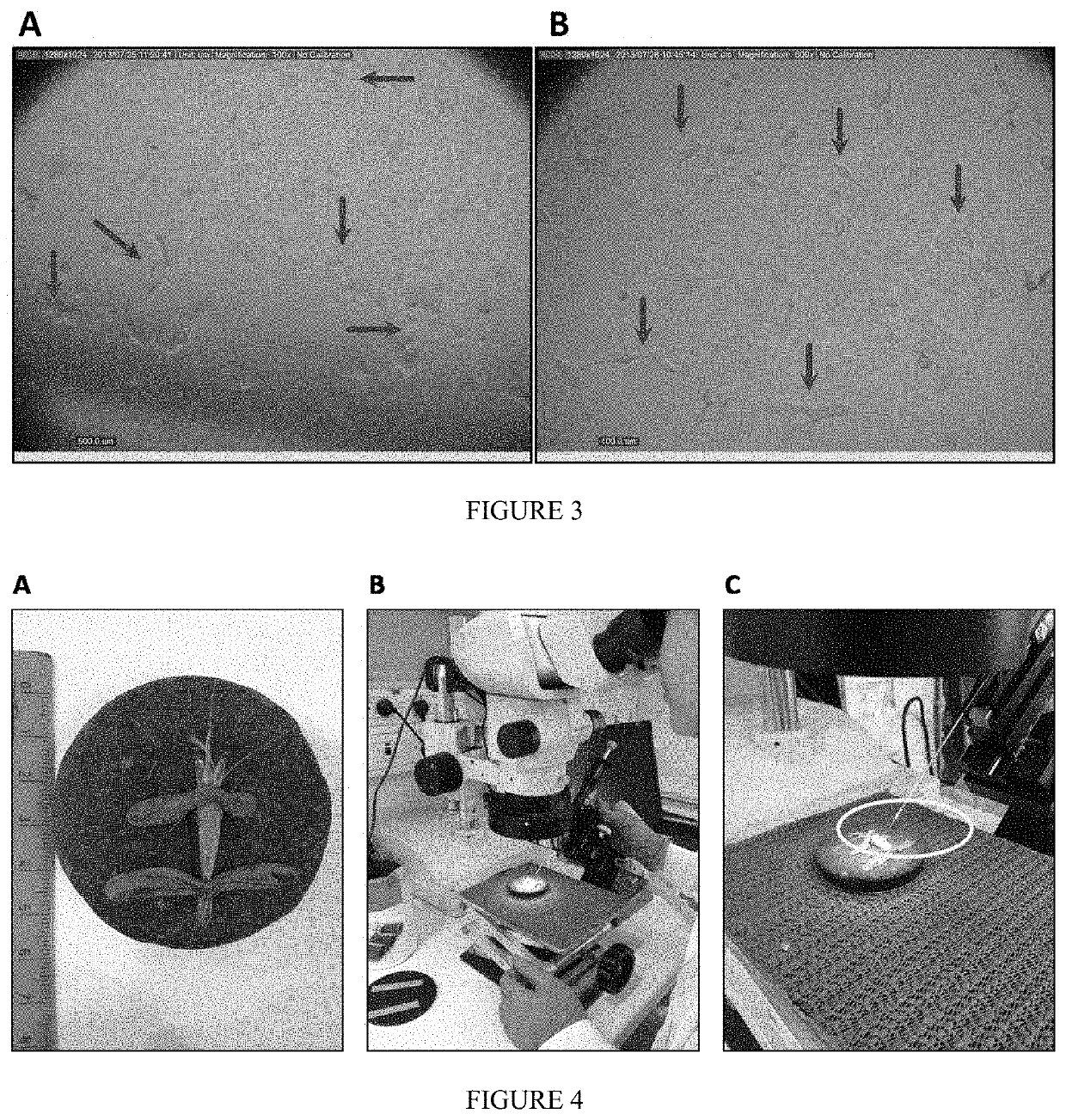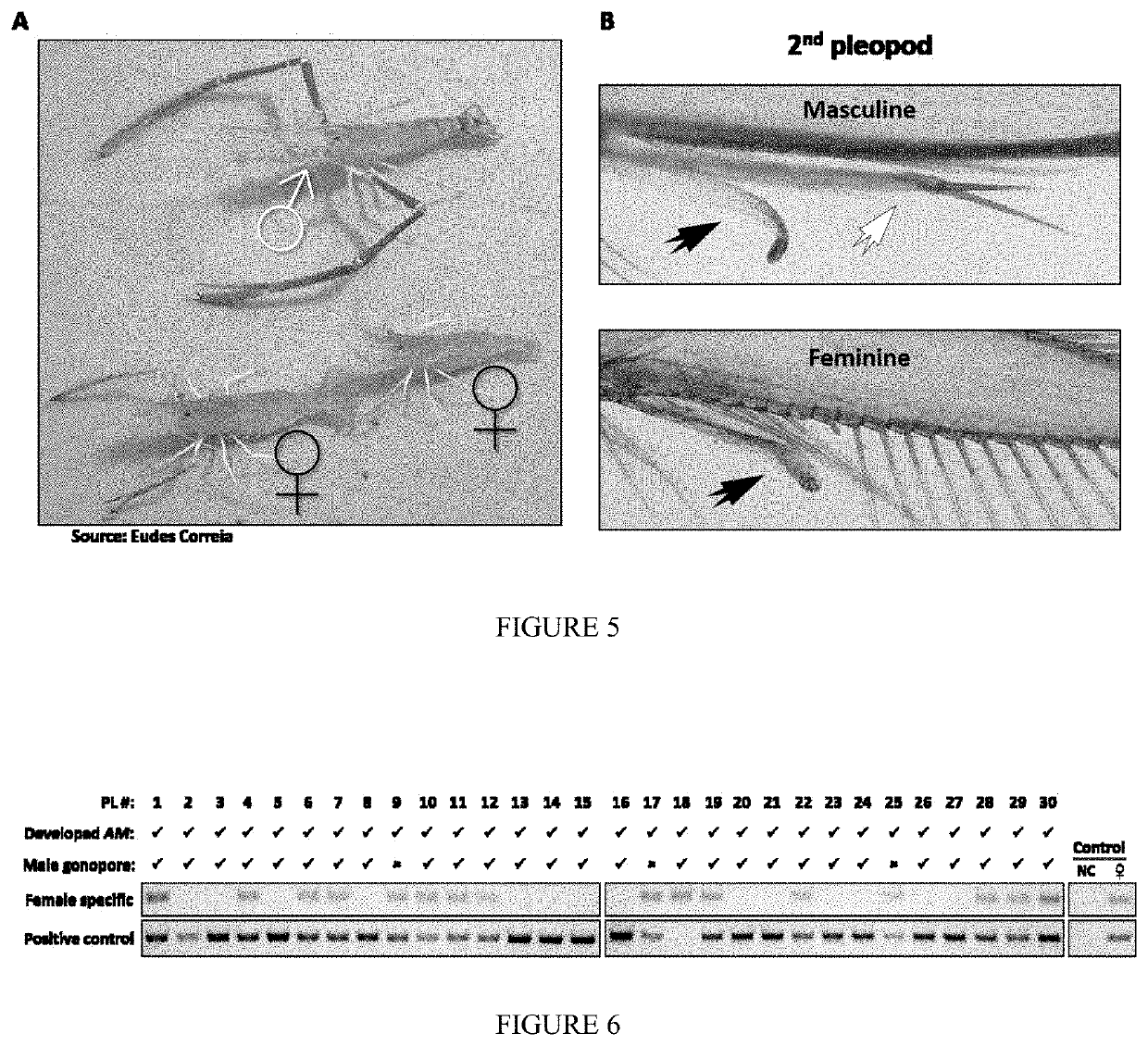Functional sex-reversal of decapod crustacean females
a technology of sex reversal and crustacean females, applied in the direction of genital tract cells, invertebrate cells, genetically modified cells, etc., can solve the problems of undesirable energy allocation, no effective technology for producing female mono-sex decapod crustacean populations,
- Summary
- Abstract
- Description
- Claims
- Application Information
AI Technical Summary
Benefits of technology
Problems solved by technology
Method used
Image
Examples
example 1
Production of Neo-Males Using a Single Injection of the Cell Suspension into Post Larvae Female Decapod Crustacean
The experimental data provided herein demonstrates the ability to produce an enzymatically-dissociated decapod crustaceans hypertrophied androgenic gland primary cell culture in suspension and the utilization of the decapod crustaceans hypertrophied androgenic gland primary cell culture for the production of Neo-males. These Neo-males are further utilized for mating and producing a WW females resulting in the generation of a mono-sex all-female culture-progeny.
W and Z Chromosomes—Sex Determination
The schematic flow diagram presented in FIG. 1 illustrates the W and Z chromosome-based sex determination model. According to this genetic mode of inheritance, females are heterogametic (WZ) and males are homogametic (ZZ). The diagram highlights that even a single injection of hypertrophied AG primary cell culture in suspension to young decapod crustacean female PLs can induce a...
example 2
Crossing the Newly Obtained Neo-Males with Normal Females
Mr Neo-males were stocked along with normal females in communal tanks (3.5-10 cubic meters). Once a week, all the females were collected from the tank after which, only egg-berried females were removed into individual glass tanks. The females were monitored daily until eggs' color had changed from orange to gray by which they were transferred to spawning tanks of 12-15 ppt saline water. After hatching, the females were removed and larvae-culture had commenced as customary. To determine whether a female was indeed fertilized by a Neo-male, each progeny were kept separately, and immediately after metamorphosis the gender and genotypic sex of the post larvae were determined as described above.
Females which were stocked along with broodstock Neo-males in communal tanks were successfully fertilized. Upon metamorphosis, PLs were genetically characterized using the DNA sex markers to verify that indeed WW PLs were present (FIG. 10) (...
example 3
Crossing on Commercial Scale
P Generation
At the parental generation (P), a single broodstock (Normal ZZ male and WZ female) produced a progeny comprised of 2,000 to 5,000 thousands of WZ siblings.
F1 Generation
Of the latter, 10 randomly chosen first generation (F1) WZ females undergone the sex-reversal manipulation which included cell injection as described herein. At least 5 of the chosen WZ females were successfully sex reversed into fully functional WZ Neo-males. This trial in which 50% success rate was recorded is in accordance to others involving successful sex-reversal of WZ females into Neo-males.
F2 Generation
Each of these Neo-males (sibling) was grown to sexual maturity and was allowed to mate once with a normal WZ female. These crossings gave rise to at least five F2 progenies. Each F2 progeny offspring are related as cousins to a parallel F2 offspring of F2. Within each of the mentioned F2 progenies at least 700 WW females were obtained. Obviously, these WW females could not...
PUM
| Property | Measurement | Unit |
|---|---|---|
| temperature | aaaaa | aaaaa |
| volume/volume | aaaaa | aaaaa |
| density | aaaaa | aaaaa |
Abstract
Description
Claims
Application Information
 Login to View More
Login to View More - R&D
- Intellectual Property
- Life Sciences
- Materials
- Tech Scout
- Unparalleled Data Quality
- Higher Quality Content
- 60% Fewer Hallucinations
Browse by: Latest US Patents, China's latest patents, Technical Efficacy Thesaurus, Application Domain, Technology Topic, Popular Technical Reports.
© 2025 PatSnap. All rights reserved.Legal|Privacy policy|Modern Slavery Act Transparency Statement|Sitemap|About US| Contact US: help@patsnap.com



